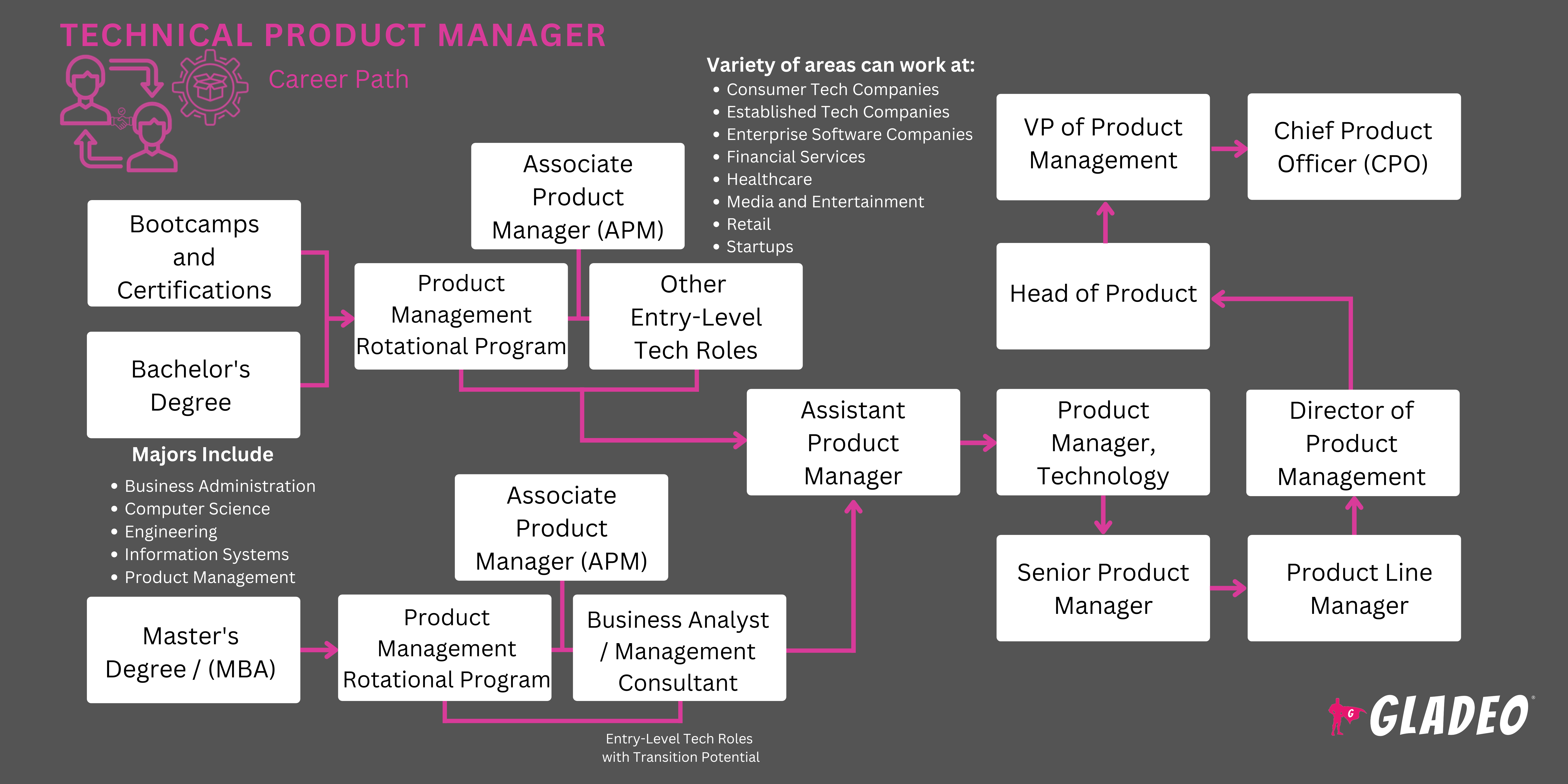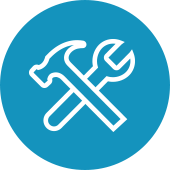聚光灯
Product Manager - Technical, Software Product Manager, Technology, Product Manager, Digital Product Manager, Platform Product Manager, Enterprise Product Manager, Infrastructure Product Manager
There are millions of products manufactured around the world, requiring skilled managers to oversee their production. But some products are very high tech – like software programs, electronics, robotics, smart devices, drones, and self-driving cars, to name a few! These products require Technical Product Managers, or TPMs, to help guide their development, production, and successful marketing.
TPMs bridge the gap between technical teams and business objectives. They oversee a product’s lifecycle from conception to launch, collaborating with engineering, marketing, and sales teams every step of the way. TPMs perform many of the same functions as traditional product managers – they’re involved with strategy, ideation, roadmapping, features development, and launch – but they have a stronger technical background, work more closely with technical teams, and have a greater focus on product capabilities.
- Driving development of cutting-edge technology
- Collaborating with diverse teams to bring innovative products to market
- Aligning technical capabilities with user needs and business objectives
工作日程
- TPMs work full-time, mainly in offices but with occasional travel to meet stakeholders and oversee production.
典型职责
- Research market trends, competitor products, and user feedback to identify opportunities.
- Identify problems that a new product or feature could solve for users.
- Contribute to product vision. Define, develop, and manage product roadmaps.
- Align engineering and product teams behind common technical goals.
- Determine product technical requirements. Ensure products will meet company objectives and comply with state and federal regulations related to safety, privacy, and security.
- Oversee the development process in collaboration with engineering, quality assurance, and software development teams.
- Make decisions on which features to add or revise for new product versions.
- Facilitate communication between technical and non-technical stakeholders.
- Define and monitor key performance indicators to assess product success.
- Develop testing procedures and establish product quality standards.
- Conduct beta tests, identify product issues, and determine necessary fixes.
- Coordinate product launch activities.
额外责任
- Evaluate product performance post-launch, using data-driven insights to refine future updates.
- Advocate for user-centric design and functionality.
- Mentor junior team members and foster a collaborative team environment.
- Keep up with emerging technologies.
软技能
- 适应性
- 分析性思维
- 沟通技巧
- 以消费者为中心
- 创造性
- 好奇心
- 决策
- 演绎性推理
- 同理心
- 灵活性
- Interpersonal abilities
- 领导人
- 组织能力
- 耐心
- 说服力
- 解决问题
- 聪明才智
- 健全的判断力
- 团队合作
- 时间管理
技术技能
- A/B testing and experimentation (Optimizely, Google Optimize, VWO, Firebase)
- API management and integration (Postman, Swagger, Apigee, GraphQL, RESTful)
- Business intelligence and metrics tracking (Snowflake, Apache Spark, Databricks, Redshift, BigQuery)
- Cloud services and infrastructure (Amazon Web Services, Google Cloud Platform, Microsoft Azure, Kubernetes, Docker)
- Customer relationship management and marketing automation (Salesforce, HubSpot, Marketo, Intercom, Zendesk, Drift)
- Customer feedback tools (UserTesting, Hotjar, Qualtrics, SurveyMonkey, Typeform, Medallia)
- Data analysis and visualization tools (SQL, Tableau, Power BI, Google Analytics, Amplitude)
- Machine learning and AI integration (TensorFlow, PyTorch, OpenAI APIs, Hugging Face)
- Product management tools like JIRA, Trello, Asana, Aha!, Productboard, Roadmunk, ClickUp
- Software development lifecycle (Jenkins, CircleCI, Travis CI, Selenium)
- Software development processes and methodologies (Agile, Scrum, Kanban, Waterfall, Scaled Agile Framework)
- User experience and prototyping (Figma, Sketch, Adobe XD, InVision, Axure RP, Balsamiq)
- Version control and collaboration tools (Git, GitHub, GitLab, Bitbucket)
- Technology companies (software and hardware)
- Startups and innovation hubs
- Tech consulting firms
- Companies with dedicated product teams
- 制造业
Technical Product Managers work closely with engineering, marketing, and sales teams to align product strategies and balance technical feasibility, business goals, and user needs. Managing expectations across teams while ensuring a high-quality user experience can be challenging, so TPMs require strong leadership and teamwork skills. They also need to be able to clearly communicate product features and strategies to executives and stakeholders who may not be technical experts.
The job can be demanding, often requiring long hours and collaboration across different time zones. TPMs must be ready to make quick, informed decisions, adapting to changes in market demands or business goals. There are often tight deadlines and shifting priorities to deal with.
On the plus side, TPMs can get a lot of job satisfaction from helping to create new products and introduce them to the market. Also, their compensation can be potentially very lucrative, with high annual salaries and potentially large bonuses tied to business impact, product success, and overall company performance.
Technical product management is evolving, with artificial intelligence shaping product decisions, automating workflows, and streamlining software development so ideas can be brought to life faster.
Tools like Bubble, Webflow, and OutSystems are enabling faster prototyping and iteration, allowing non-technical teams to contribute during development processes. This shift is making product management more accessible to non-tech business professionals, too.
Another emerging trend is the heightened focus on privacy, security, and ethical AI. TPMs must develop products that safeguard user data through robust encryption, secure authentication methods, and enhanced data protection. They also need to ensure compliance with regulations such as the General Data Protection Regulation and California Consumer Privacy Act.
Future TPMs often enjoyed problem-solving, organizing tasks, and working in teams. They were likely drawn to technology, coding, and improving processes, finding satisfaction in making systems more efficient. Many also had a knack for leadership, communication, and multitasking!
- TPMs usually need at least a bachelor’s degree in computer science, software engineering, information technology, or a related technical field.
- Advanced roles may require a master’s degree (e.g., MBA, MS in Computer Science).
- 相关课程包括
- Agile Project Management
- Data Structures and Algorithms
- DevOps and Continuous Integration
- IT Infrastructure and Architecture
- Software Development Lifecycle
- Systems Engineering
- Product Management
- 风险管理
- Many TPMs complete certifications related to the specific technologies they work with.
- Certifications in product and project management can also be useful, such as:
- Association of International Product Marketing & Management - Certified Innovation Leader
- General Assembly - Product Management Certificate
- Google - Project Management Certification
- IBM - Enterprise Design Thinking Practitioner
- MIT xPRO - Product Management Certificate
- Pragmatic Institute - Product Management
- Project Management Institute - PMI Agile Certified Practitioner
- SAFe - SAFe Product Owner/Product Manager
- Scrum Alliance - Certified Scrum Product Owner
- Practical experience through internships or related work is highly valuable.
Check out U.S. News’ Best Computer Science Schools or Niche’s 2025 Best Colleges for Computer Science in America for ideas to get started on your program search.
- Take courses in computer science, software engineering, and business management.
- Join IT, coding, business-related student organizations.
- Develop leadership and communication skills through group projects and team-based activities.
- Seek internships or part-time roles in tech companies, focusing on project coordination or software development. Try to gain exposure to different industry tools and methodologies.
- Learn to use product management and development programs like Jira, Trello, Figma, or SQL.
- Familiarize yourself with agile methodologies, product lifecycle management, and stakeholder collaboration.
- Build a tech portfolio showcasing projects, product roadmaps, and process improvements.
- Network with professionals during internships, meetups, or online forums to build valuable connections.
- Read books, listen to tech podcasts, and watch videos about product management, software development, and user experience.
- Scan through lots of tech product and software reviews to learn about user feedback.
- Think critically about how products can be improved. Discuss ideas with peers and explore real-world problems.
- Document product ideas and workflows in notebooks or digital tools for future reference.

- Most people work their way up to becoming a Technical Product Manager by first filling positions such as:
- 软件工程师
- Product Manager (General)
- Project Manager (Technical)
- Technical Program Manager
- UX Designer/Researcher
- 开发工程师
- Security Engineer
- Technical Support Engineer
- Marketing Technologist/Growth Engineer
- Search for jobs on portals like LinkedIn, Indeed, and Levels.fyi. Read job descriptions carefully and make sure you meet the qualifications. Identify any skill gaps and work on closing them.
- Review TPM resume templates for ideas about keywords to include and how to phrase things impactfully. Keywords might include:
- A/B testing
- Agile and scrum
- AI and machine learning
- API development
- 云计算
- 跨职能合作
- Customer journey mapping
- Data-driven decision making
- Go-to-market strategy
- Key performance indicators
- Product lifecycle management
- Product roadmap
- 风险管理
- ROI analysis
- Software development lifecycles
- Stakeholder management
- UX/UI design principles
- Wireframing and prototyping
- Use your school’s career center for resume assistance, mock interviews, and networking events.
- Ask former managers, professors, or internship supervisors for recommendations and references.
- Ensure your digital footprint is clean and professional. Optimize your LinkedIn profile and showcase relevant projects or case studies.
- Spruce up your portfolio of successful projects, including roadmaps, execution strategies, and measurable outcomes.
- Before going to an interview, learn about the company and the position. Be ready to discuss how you can contribute to the mission. Use examples of how you have collaborated with engineers, designers, and business teams to deliver technical projects.
- Offer ideas that turn into viable, money-making products. The more profit you help your employer earn, the more responsibilities and compensation you should be rewarded with!
- Continue to build upon your education by completing additional certifications and continuing education courses. Keep up with the latest developments with AI and machine learning.
- If needed, enroll in a master’s degree program such as an MBA or an MS in Computer Science to take your talent to the next level.
- Never cut corners when it comes to product safety, which equals consumer safety.
- Ensure compliance with state and federal regulations, such as the General Data Protection Regulation and California Consumer Privacy Act.
- Be the go-to problem solver that your employer comes to trust and rely upon.
- Mentor new team members and help them develop their knowledge and skills to the highest standards.
- Stay open to constructive criticism. Demonstrate patience and persistence as you collaborate with teams and managers.
- Learn how to de-escalate conflict so everyone can keep moving towards goal achievement.
- Stay on top of tech product design trends and never stop learning new techniques.
- If there are no advancement opportunities with your current employer, research other options. Just remember to leave on good terms and never burn bridges!
网站
- ACM Special Interest Group on Management of Data
- Agile Alliance
- 美国质量协会
- ASM国际
- 国际产品营销与管理协会
- 哈佛商业评论
- IEEE计算机学会
- 国际商业分析研究所
- McKinsey Digital
- Mind the Product
- MIT Sloan Management Review
- 全国制造商协会
- Pragmatic Institute
- Product Coalition
- 产品开发与管理协会
- Product School
- Reforge
- Scrum Alliance
- Silicon Valley Product Group
- 技术新闻网(TechCrunch)
书籍
- Escaping the Build Trap: How Effective Product Management Creates Real Value, by Melissa Perri
- Inspired: How to Create Tech Products Customers Love, by Marty Cagan
- Product Management in Practice: A Real-World Guide to the Key Connective Role of the 21st Century, by Matt LeMay
- The Influential Product Manager: How to Lead and Launch Successful Technology Products, by Ken Sandy
- The Lean Product Playbook: How to Innovate with Minimum Viable Products and Rapid Customer Feedback, by Dan Olsen
Technical Product Managers rely on several skills such as strategic planning, technical expertise, project management, stakeholder communication, data analysis, and cross-functional collaboration. If you’re curious about other fields that use similar skills, here are a few alternatives for you to consider!
- Advertising, Promotions, and Marketing Manager
- 建筑和工程经理
- 艺术总监
- 建筑经理
- General and Operations Manager
- 平面设计师
- 健康和安全工程师
- 工业设计师
- 工业工程师
- 管理分析师
- 机械工程师
- 运营研究分析师
- 项目管理专家
- Quality Control Systems Manager
- 销售经理
- 软件开发人员
- 供应链经理
- Transportation Manager
新闻联播

特色工作

在线课程和工具








